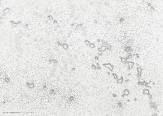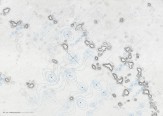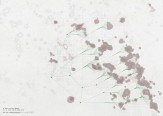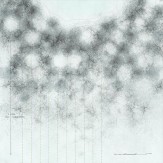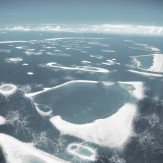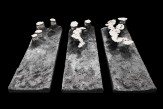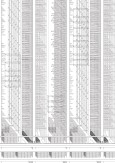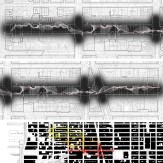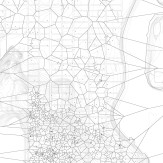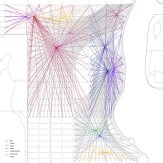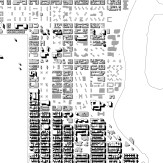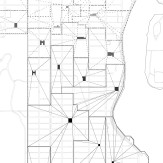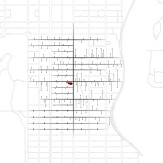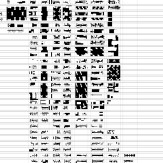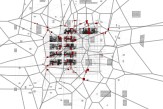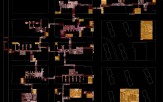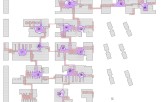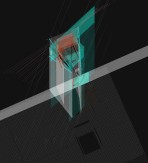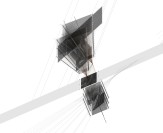Master of Architecture II Summer 2014
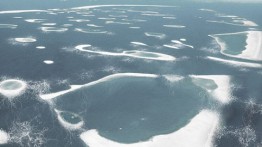
Projects
-

Coralantis
-
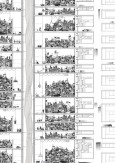
Objects and Clouds
-
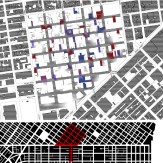
Investigating Fringespace
-

Constructing Parallax Space
Back
Coralantis
Coralantis: Regeneration of the Ocean Rainforest
Hancheng Chen
Coral reefs support an estimated 25 percent of all marine life, with more than 4,000 species of fish alone—even though they cover less than one percent of the ocean floor. It is one of the most diverse ecosystems in the world. The absence of the coral reef is the desertification of the marine environment.
Coral mining, pollution, overfishing, blast fishing, canal digging and access into islands and bays are serious threats to these ecosystems. Today, 19 percent of the existing area of coral reefs has already been lost. By the 2030s, 90 percent of the reefs are expected to be at risk from both human activities and climate change. By 2050, all coral reefs will be in danger of extinction.
This project focuses on the Marshall Islands, a typical reef environment which has the potential to experiment with a new manner of coral growing. Through examinations of the consequences of coral accumulation and the particular pattern of currents within coral topography, a catalytic system was discovered. This system accelerates the growing of coral 5-16 times faster than usual. The rainforest of the sea could be regenerated significantly and a Coralantis could be built humbly within the ocean.
Objects and Clouds
Objects and Clouds: The Physicality of the Virtual and the Case of E-Commerce
Yael Agmon
This project explores the constant tension between the Physical and Virtual domains. Through a comparison of different systems of order, within which each domain is embedded and operates, complex relationships of unexpected, hybrid and even paradoxical conditions are revealed. The questions thus posed are whether and how these conditions liberate or constrain each other and how they guide and inform our inhabited environments.
Within this conceptual framework, the project examines the phenomenon of E-Commerce through a case study of Amazon.com—the world’s largest online retailer—revealing the interrelationships between the Virtual and the Physical through three central entities: Subjects, Objects, and Data. Amazon.com exposes a distinct virtual system of organization that challenges and redefines what we understand as physical order and how it figures in our thinking of the concept of order at large.
This thesis offers a radical and surreal observation or interpretation of, the E-commerce vision of an ideal urban environment that questions and hypothesizes the impact of virtual orders on physical space and the physical borders of the virtual.
Investigating Fringespace
Investigating Fringespace
Rosannah Sandoval
Entropy of the urban text is the subject of this investigation of fringespace. The term “fringespace” derives from “fringe,” meaning something regarded as peripheral, marginal, an unraveling edge or extreme in relation to something else. Within the context of this thesis, the word describes entropic urban areas. Entropy in the city occurs as the physical ramification of that which is lost in the exchange of social, political, infrastructural forces through the urban fabric. It is at the site of loss that this investigation exposes the scale between the city and architecture.
The thesis poses this question: Does the manifestation of entropy within the city produce a positive tool to rewrite the city? The project discovers a parallel version of East Harlem, in which the text of the city is shocked by an appropriation of its fringespaces. Through the operations of unbuilding, a new potential for the city block is revealed as an alternative space for programs more specific to the inhabitants of East Harlem. The structure of the Manhattan fabric is turned inside out and transforms the margins of the city as a positive edge.
Constructing Parallax Space
Constructing Parallax Space: Drawing the Conversion of 2D Movies into 3D Movies
Bahar Avanoglu
This thesis deals with the operation of ‘masking’ that is applied in the conversion of 2D films into 3D films. It focuses on the translative operations that take place while the flattened image is processed into a three-dimensional space. It explores through drawing the structure of these operations and the spaces they generate by investigating the construction of a three-dimensionality through the displacement and manipulation of objects in space and time and, thus, the construction of another space. Perspective, depth of field, the double and the reverse are among the primary issues involved in masking. In order to explore the complex relationships it generates, a sequence from the film In the Mood for Love was chosen. The displacement of the foreground from its background and the exchange between the movement of the camera in the actual space and movement of objects in the translated space are the main conditions that were explored.


